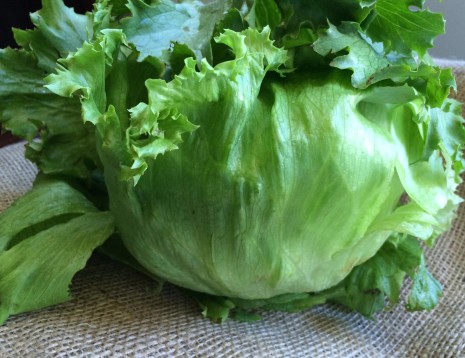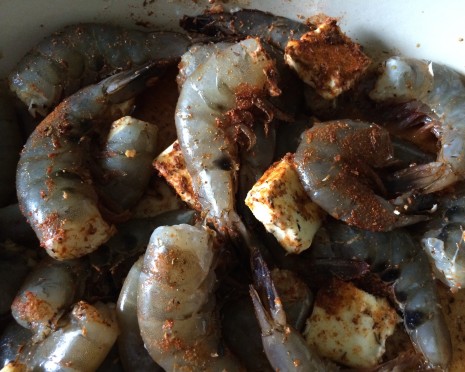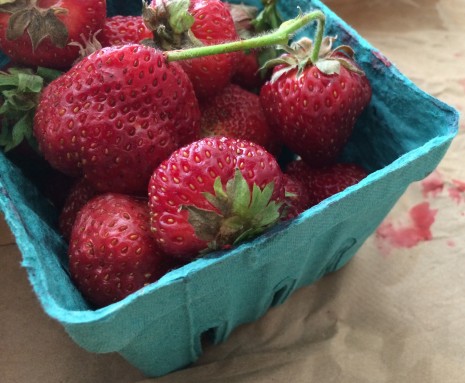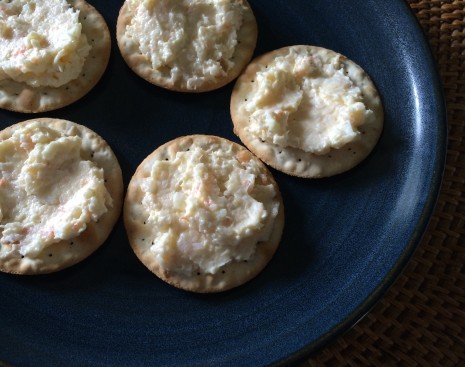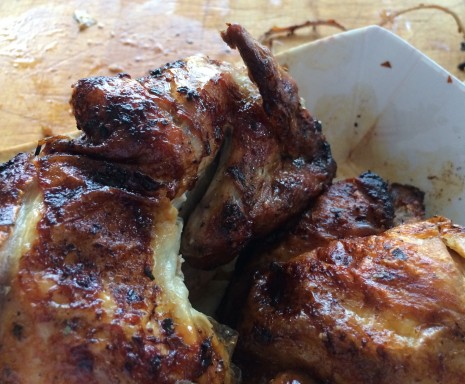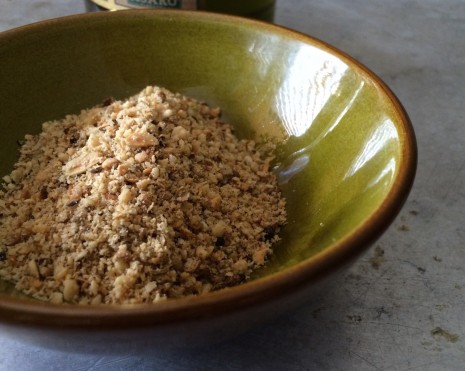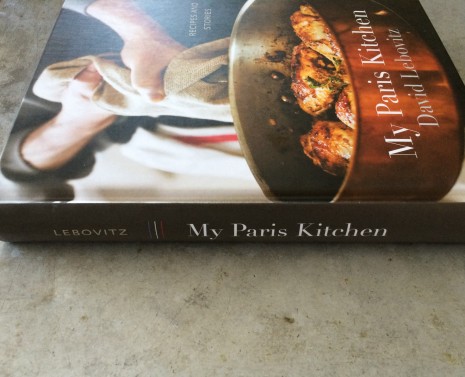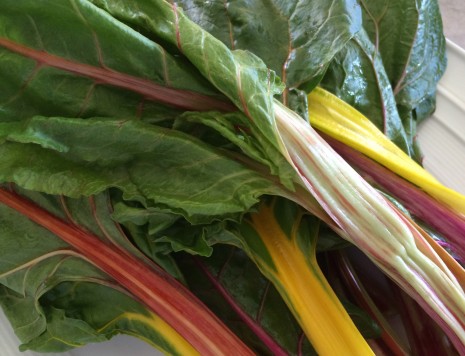HOT BISCUITS & BLACKBERRY BUTTER
Compound butters—butter creamed with different flavorings—may be old-fashioned, but they are versatile as all get out—think of them as instant sauces that add finesse and another layer of flavor to very simple food. A classic French maître d’hôtel butter (softened butter mashed with chopped parsley and a little lemon juice and zest) ennobles just about anything, especially a grilled steak or steamed vegetables. Deep-flavored anchovy butter, with garlic and a couple of mashed anchovy fillets, adds resonance to fish, lamb chops, or broiled chicken. An herby-vervy butter, with chopped cilantro, parsley, and a pinch of cayenne or chile powder forestalls any “corn on the cob again?” ennui at the dinner table.
Below is a compound butter that swings more sweet than savory. Its provenance was a happy accident: After we made a jumbleberry pie the other day, I realized we had a half pint of blackberries left over. Cooking brings out the soulfulness, the winey depth of blackberries, and first I’d thought to make a compote to spoon over pancakes or ice cream, or eat alongside a well-seared pork chop. But then I got to thinking about biscuits, hot biscuits, and well, that pushed me in a butter direction.
Speaking of biscuits, I swear by Scott Peacock’s recipe. He’s a chef in constant pursuit of perfection, and so is constantly tweaking it; the version below is an annotated amalgam of that from the pages of Martha Stewart Living (April 2013) and the one that appeared in The Gift of Southern Cooking (Alfred A. Knopf, 2003), which he wrote with his longtime companion, Miss Edna Lewis, one of America’s most evocative chefs and food writers. Scott is no slouch himself.
Blackberry Butter
½ pint blackberries
1½ to 2 tablespoons sugar, depending on how tart the berries are
A squeeze of fresh lemon juice
1 stick unsalted butter, softened until very malleable
1. Put the berries, sugar, and lemon juice in a small saucepan and bring to a boil. Reduce the heat and simmer, smashing most of the berries against the side of the pan to break them down, until the mixture is of a syrupy thickness and smells intoxicating. Remove the pan from the heat and let the mixture cool completely.
2. Put the butter in a bowl and mash with a fork until it’s light and creamy. Gently work the berry mixture into the butter, then pack it into a ramekin. Refrigerate for an hour or more to let it firm up and the flavors mingle. Serve with hot biscuits, pancakes, waffles, or toast. It would probably be good in oatmeal, too.
Scott Peacock’s Perfect Biscuits
Makes 12 biscuits
5 cups sifted unbleached all-purpose flour (measure the flour after sifting, not before), plus more for working
1 tablespoon plus 1 teaspoon Homemade Baking Powder (see below) or store-bought
1 tablespoon kosher salt
½ cup plus 2 tablespoons packed very cold lard or unsalted butter, cut into cubes
2 cups well-shaken buttermilk
3 tablespoons unsalted butter, melted
1. Preheat the oven to 500º with the rack in the upper third. Whisk together the flour, baking powder, and salt in a large bowl. Add the lard or butter, coating it well with flour. Working quickly, rub it between your fingertips until approximately half is finely blended and the other half remains in large flat pieces, about ½ inch in size.
2. Make a well in the center of the mixture and add the buttermilk all at once. Stir quickly with a wooden spoon just until the dough is blended and begins to mass. It will look like a sticky, shaggy, unpromising mess and will not form a ball. (Do not panic, but keep calm and carry on.)
3. Generously flour a work surface and immediately turn out the dough onto it. With floured hands briskly knead 8 to 10 times, until it becomes cohesive. Gently flatten the dough with your hands into a disk of even thickness. Using a floured rolling pin, roll it out to a thickness of ¾ inch. Flour the rolling pin as needed, but don’t flour the dough; otherwise, the tops of the finished biscuits will be dusty.
4. Using a dinner fork dipped in flour, piece the dough completely through at ½-inch intervals. Flour a 2½ to 3-inch cutter and stamp out rounds without twisting the cutter in the dough. (Twisting the cutter pinches the edges together, which will inhibit the rising.) Cut the biscuits as close together as you can, for maximum yield. Transfer them to a parchment-lined heavy baking sheet, placing them about ½ inch apart. (Placing the biscuits close together ensures that the sides don’t set early, another rise-inhibiter.) Don’t reroll the scraps. Just arrange them around the edge of the sheet and bake them off as is—cook’s treat. Bake the biscuits until crusty and a rich golden brown, 10 to 15 minutes. (“Don’t be afraid of brown biscuits!” Scott always says. That crusty brown exterior provides contrast to the light, tender interior.) Remove from the oven and brush the tops with melted butter. Serve hot. (To reheat any leftover biscuits—you wish!—put them on a wire rack set in a rimmed baking sheet and warm them in a 350º oven about 5 minutes.)
Homemade Baking Powder
In The Gift of Southern Cooking, Scott explains that, “Distressed by the chemical additives and aftertaste of commercial ‘double-acting’ powders, Miss Lewis years ago started making her own baking powder—a traditional mixture of cream of tarter and baking soda.” He started using her formula, and soon came to appreciate the difference. I’m a believer, too—there’s no metallic aftertaste like there is with powders that include aluminum sulfate.
¼ cup cream of tartar
2 tablespoons baking soda
Sift the ingredients together 3 times and transfer to a clean, tight-sealing jar. Store at room temperature, away from sunlight, for up to 6 weeks.
Posted: August 19th, 2014 under baking, people + places, recipes, summer.
Comments: 1



